Improve Fish Passage through Culverts with the Flexi Baffle®!
Second to dams, culverts are the most significant problem for Aquatic Organism Passage (AOP). Removing/bridging culverts is always the best option for impoving fish passage and AOP. However, removal is not always feasible due to excessive cost or impacts to tranportaion or infrastruction.
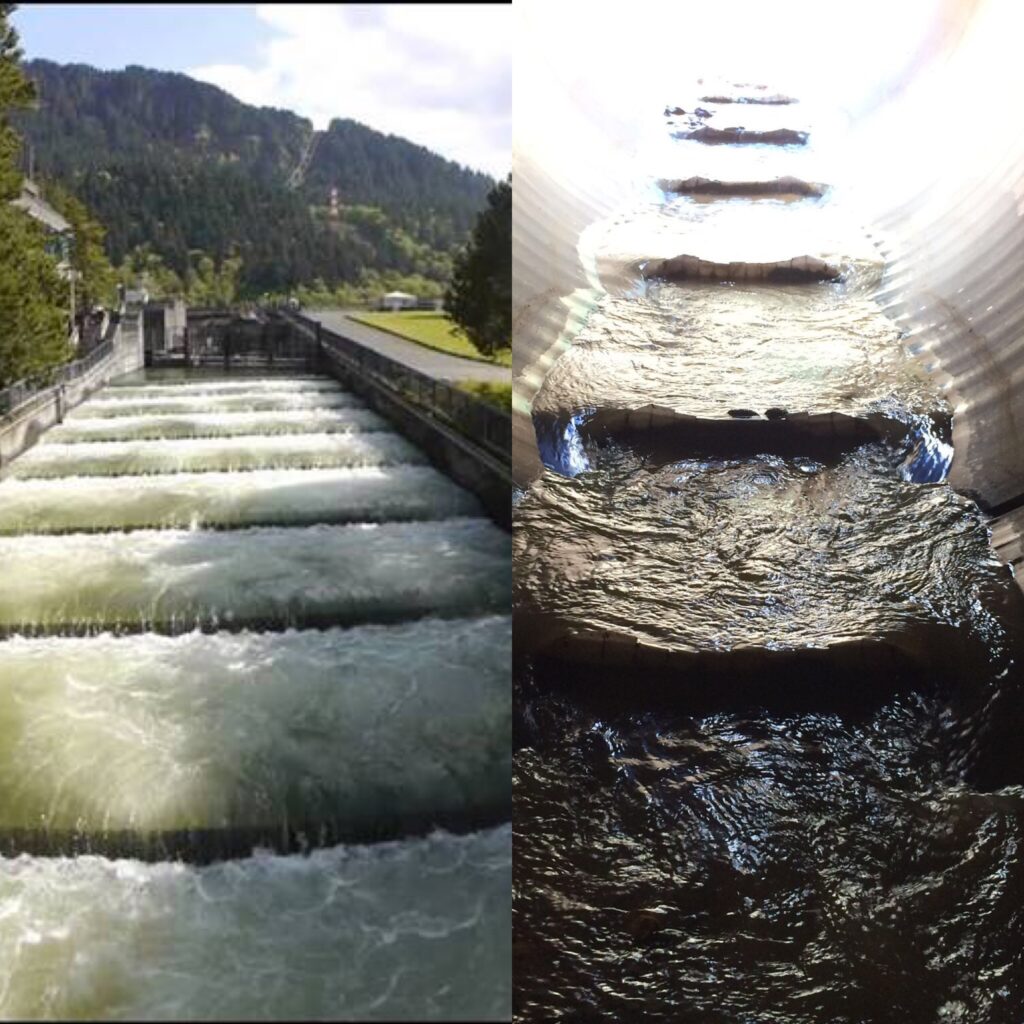
Baffles or weirs are proven methods for enhancing fish passage through fish ladders. They reduce water velocities and increase water depth, thereby improving the success of fish passage. However, rigid baffles decrease the hydraulic capacity of culverts and also trap debris, necessitating costly or hazardous maintenance. In contrast, flexible baffles offer an improvement in fish passage without the drawbacks associated with rigid structures.
The Flexi Baffle is a flexible baffle or weir used to improve fish passage through culverts, bridges, and similar structures. The Flexi Baffle is a “fish-friendly” flexible culvert baffle that is utilized to modify and regulate flow through a culvert, thereby improving Aquatic Organism Passage (AOP).
Salmon, trout, and other fish and aquatic species are often impeded from their habitat by poorly designed or constructed culverts. Repairing or removing culverts is often costly and requires considerable time and resources. We have developed culvert baffles that enhance fish passage effectively and economically.
The Benefits of the Flexi Baffle Design
Traditional baffles reduce the hydraulic capacity of a culvert and catch debris, leading to costly and dangerous clean-out requirements. The Flexi Baffle is designed to “bend over” in high flows, maintaining the hydraulic capacity of your culvert. This flexibility also allows debris to pass through the culvert unimpeded. Once the water flow declines, the Flexi Baffle reorients and creates a fish ladder in your culvert.
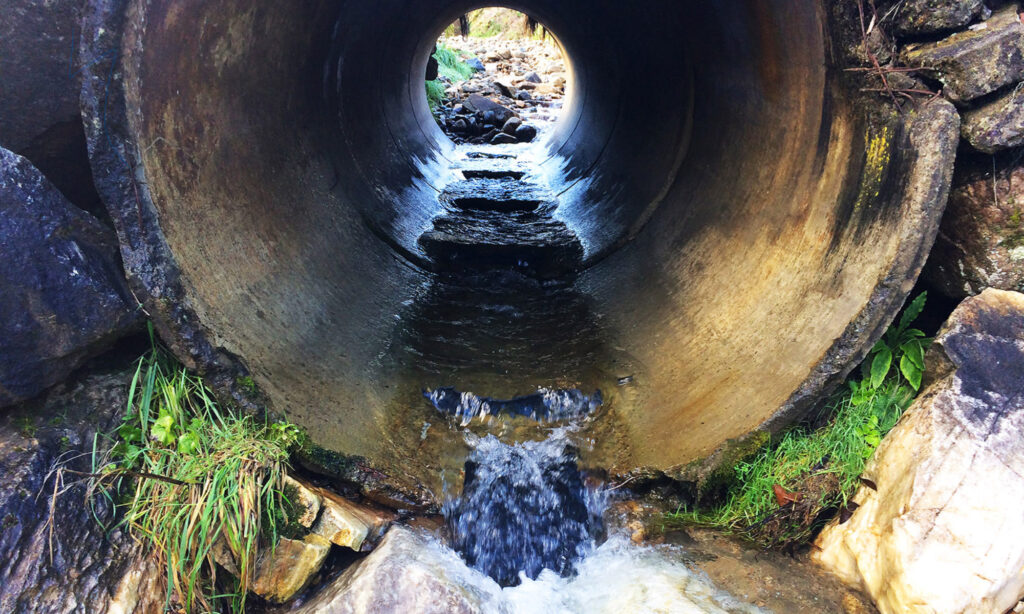
The Flexi Baffle creates a “weir and pool” design to establish resting pools in a culvert. This reduces water velocity and increases water depth, improving fish passage conditions. As a result, the Flexi Baffle can be used to enhance habitat connectivity for a variety of strong and weak swimming species in hundreds of installations worldwide.
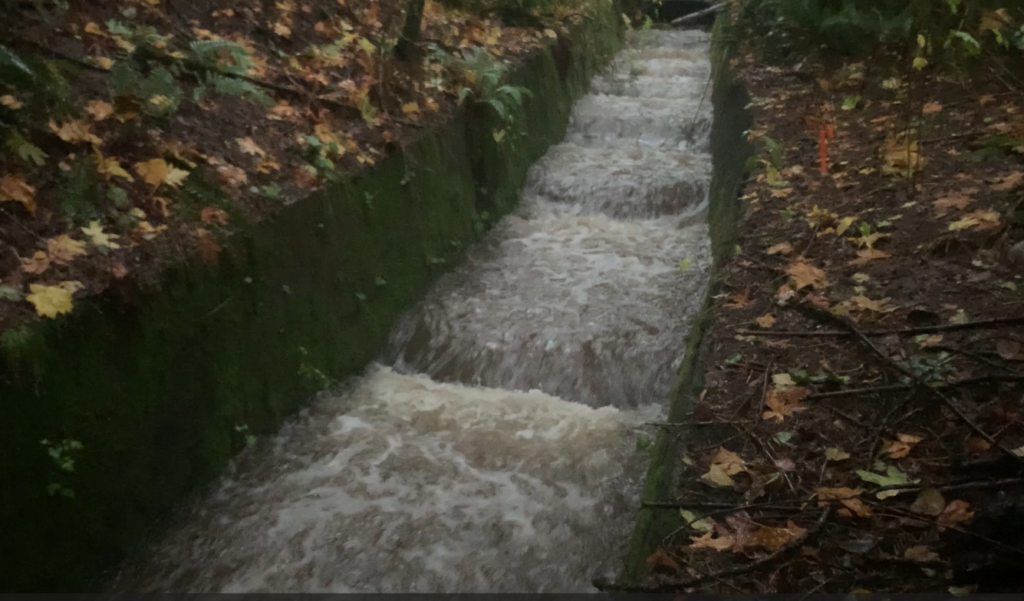
Baffles or weirs, like those found in fish ladders, are a proven method for improving fish passage and AOP. However, a solid weir or baffle often adversely affects the hydraulic capacity of the culvert. Solid structures can also be damaged during high flow events. We have developed the “fish friendly” Flexi Baffle, a flexible weir that can be adapted to a wide variety of culverts to reconnect fish and other aquatic organisms with their habitat.
Improve Habitat Connectivity with the Flexi Baffle
The Flexi Baffle culvert baffle can improve passage for a variety of weak and strong swimming species. Populations of fish and other aquatic organisms can become isolated by poor culvert passage conditions. Anadromous species, such as salmon and lamprey can be excluded from spawning grounds. Juvenile eels are often precluded from freshwater habitat by poor culvert passage conditions. Reconnecting these habitats is the key to conserving these species.
Maintain Hydraulic Capacity of the Culvert with the Flexi Baffle
The Flexi Baffle culvert baffle or culvert weir has a flexible design which allows them to bend over and pass flows during high water events. After the flood event, the baffle returns to vertical thereby creating resting pools and slowing water velocity which provides improved passage conditions. The Flexi Baffle is therefore also “culvert friendly”!
The Flexi Baffle is Inexpensive and Simple to Install
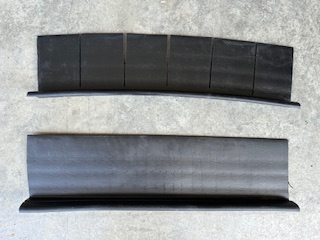
The Flexi Baffle can be installed in a variety of culvert shapes, sizes and materials. Flexi baffles can be installed in any size or shape of culvert. The baffle material is cut vertically at intervals to allow it to be bent and shaped to your culvert. The Flexi Baffle culvert baffle is installed with common hand tools. You don’t need expensive tools or a lot of expertise to install. A team of two can install the Flexi Baffles in most typical culverts in just a few hours.
We Can Assist with your Flexi Baffle Application
Our Fish Passage experts can assist you with your specific culvert baffle application. Each culvert is different. We can help design the type and configuration of Flexi Baffles that will provide the most benefit for your site.
Learn more from our Fish Passage Experts>>>
Videos
Before and After Flexi Baffle installation in the Bon Accord Creek Flume. Surrey, British Columbia
Flexi Baffles installed in a Box Culvert by the Nooksack River Salmon Enhancement Association. Whatcom County, Washington State
Flexi Baffle Installation Mill Brook, VT
The White River Partnership installed Flexi Baffles in a culvert on Mill Brook to improve fish passage for brook trout. The installation improved fish passage while maintaining the hydraulic capacity of the culvert.
Before and After Fish Weir Installation
Johnson Creek Fish Passage Restoration
Portland, OR
Prior to Culvert Remediation
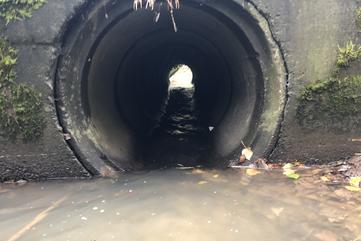
Improve Fish Passage with Culvert Baffles
Installing Fish Weirs in a Culvert to Improve Fish Passage
Fish Passing Culvert After Fish Weir Installation

